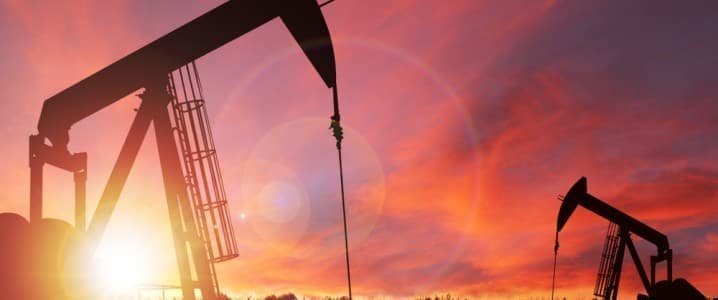After years in the making, a new fully automated drilling rig recently made its debut in Permian Basin. While this has long been a pipedream, restrictions faced by many oil and gas companies during the pandemic forced several to stop operations and call rig workers home. This spurred a plethora of tech companies to establish partnerships with oil giants to help automate systems and digitalize operations so that projects could run with or without human workers, through innovations like robot rigs.
In October, Houston company Nabors Industries achieved drilling to a depth of almost 20,000 feet with its automated rig, with no help from a crew on the floor to run operations manually. The company is expected two dig three wells in the area as part of its test phase. The Nabors Pace-R801 is the world’s first fully automated land rig, taking five years of engineering to achieve. It supports ExxonMobil operations in the region, providing unmanned vessels to drill wells that would previously have required whole teams on board.
The rig uses digital technologies and Canrig robotics to man the platform, providing vital components such as a robotic arm that runs the drill. The company also says that its SmartDRILL and SmartSLIDE automation software helps to reduce drilling times by up to four days, thereby reducing carbon emissions in projects.
Travis Purvis, Senior Vice President of global drilling for Nabors, stated “This is the direction that the industry is heading and should head,” Further, “This robotic technology really is game-changing. Over the next five to 10 years, it’s going to be really exciting to see the innovation that happens around that.” The transition to human-free rigs emerged last year in the ‘ghost rig’ concept when systems were run remotely by rig workers that were prohibited from physically accessing the platforms during Covid. Although discussions around automated rigs have been going on for years. Norway’s Equinor switched to a ghost rig approach in 2020, with crews operating the platform remotely, followed shortly after by BP and other oil majors.
Related: The World’s Top Automakers Are Doubling Down On Electric Vehicles Other robotic mechanisms have been used across the oil and gas industry for years, including robotic dogs that support the monitoring of oil platforms, as well as onshore drones that check for pipeline leaks.
However, this latest innovation worries workers in the oil and gas industry that were already hit hard during the pandemic. Around 400,000 jobs were cut from the sector during Covid, half of which were in the U.S. The main worry for oil and gas workers at present is the impending transition away from fossil fuels to renewable alternatives. But the digitalization of systems and the addition of robotics could spell earlier job losses than previously anticipated.
Yet, others praise the innovation, noting that oil rigs are traditionally extremely dangerous places for workers to operate, no matter the level of safety standards implemented. Accidents take place regularly due to the complex nature of the work, digging holes deep into the earth’s surface to extract crude. This could be an important move towards improving the social aspect of ESG, as Big Oil faces increasing pressure to better operations. Although, a reduction in drilling time also spells a decrease in the emissions being released, which will also support the environmental part.
Many highlight the long history of oil rig disasters such as the Piper Alpha pipeline ruptures, which caused the rig to set alight at the cost of 167 human lives. Just this year, we saw a fire outbreak at a Mexican oil rig cause the death of five workers. And while the world focuses on putting an end to oil extraction for environmental reasons, it is important to note the social implications, as oil operations are set to continue so long as the availability of renewable alternatives is limited.
Related: Tight U.S. Oil Inventories Prop Up Oil Prices
Jason Gahr, ExxonMobil operations manager on the project explained, “ExxonMobil’s collaboration with Nabors in deploying this automated rig in Midland demonstrates the ability to optimize drilling using the combined power of robotics, automation, computing, and data”. In addition, “This is a great example of enhancing the safety, efficiency, and environmental performance of our operations through innovative technologies.”
And Nabors is insistent that automation doesn’t necessarily mean job losses, as workers will be kept on to supervise operations and carry out essential tasks. It will simply prevent workers from having to be present in the most dangerous ‘red zone’ of the rig. However, as the new technology is adopted by other firms around the globe, we will see what it means in practice for oil workers, many of whom are still working remotely due to new restrictions.
The innovation of robot rigs is clearly ground-breaking, taking years of careful planning, investment, and engineering. However, only time will tell what this means for the oil industry and its workers, as digitalization and the automation of operations picks up pace across the board.
By Felicity Bradstock for Oilprice.com
More Top Reads From Oilprice.com:
Credit: Source link




















